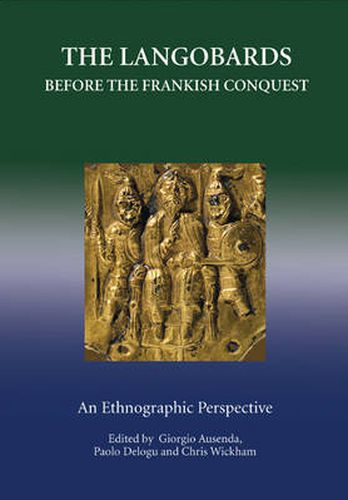Readings Newsletter
Become a Readings Member to make your shopping experience even easier.
Sign in or sign up for free!
You’re not far away from qualifying for FREE standard shipping within Australia
You’ve qualified for FREE standard shipping within Australia
The cart is loading…






The Langobards or Lombards were the last Germanic group to invade the Roman Mediterranean, crossing the Alps into Italy in 568-9. They were nonetheless one of the longest-lasting, for their state survived Charlemagne’s conquest in774, and was the core of the medieval kingdom of Italy. The incompleteness of their conquest of Italy was also one of the root causes of Italian division for over 1300 years after their arrival. But they present a challenge to the historian, for most of the evidence for them dates to the last half-century of their independence, up to 774, a period in which Langobard Italy was a coherent and apparently tightly-governed state by early medieval standards. How they reached this from the incoherent and disorganised situation visible in late sixth-century Italy is still a matter of debate.
The historians and archaeologists who contribute to this volume discuss Langobard archaeologyand material culture both before and after their invasion, Langobard language, political organisation, the church, social structures, family structures, and urban economy. It is thus an important and up to date starting point forfuture research on early medieval Italy.
Contributors: G. AUSENDA, S. BARNISH, S. BRATHER, T.S. BROWN, N. CHRISTIE, M. COSTAMBEYS, P. DELOGU, D. GREEN, W. HAUBRICHS, J. HENNING, B. WARD-PERKINS, C. WICKHAM.
$9.00 standard shipping within Australia
FREE standard shipping within Australia for orders over $100.00
Express & International shipping calculated at checkout
Stock availability can be subject to change without notice. We recommend calling the shop or contacting our online team to check availability of low stock items. Please see our Shopping Online page for more details.
The Langobards or Lombards were the last Germanic group to invade the Roman Mediterranean, crossing the Alps into Italy in 568-9. They were nonetheless one of the longest-lasting, for their state survived Charlemagne’s conquest in774, and was the core of the medieval kingdom of Italy. The incompleteness of their conquest of Italy was also one of the root causes of Italian division for over 1300 years after their arrival. But they present a challenge to the historian, for most of the evidence for them dates to the last half-century of their independence, up to 774, a period in which Langobard Italy was a coherent and apparently tightly-governed state by early medieval standards. How they reached this from the incoherent and disorganised situation visible in late sixth-century Italy is still a matter of debate.
The historians and archaeologists who contribute to this volume discuss Langobard archaeologyand material culture both before and after their invasion, Langobard language, political organisation, the church, social structures, family structures, and urban economy. It is thus an important and up to date starting point forfuture research on early medieval Italy.
Contributors: G. AUSENDA, S. BARNISH, S. BRATHER, T.S. BROWN, N. CHRISTIE, M. COSTAMBEYS, P. DELOGU, D. GREEN, W. HAUBRICHS, J. HENNING, B. WARD-PERKINS, C. WICKHAM.